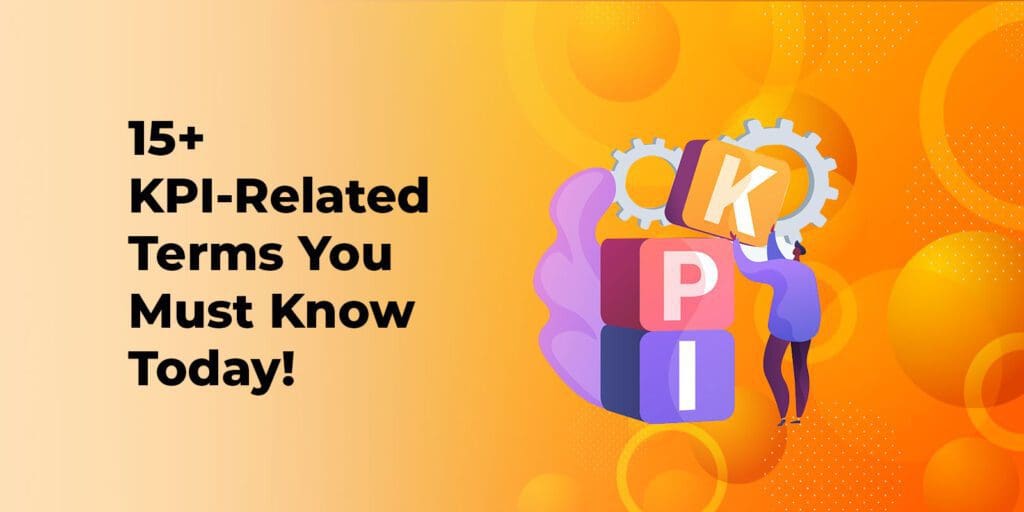Table of Contents
15+ KPI-Related Terms You Must Know Today!
As a performance indicator, KPIs assess the success of an organisation. Read on to find out the important terms discussed in relation to performance evaluation with this helpful KPI glossary.
Some KPI Terms You Must Know For Quick Reference
Analytics
This refers to the usage of techniques and available technology to interpret and convey information and patterns present in raw data. This helps to optimise performance and rectify areas that need change. Analytics can also help improve employee engagement and customer experience.
Attrition Rate
The attrition rate is measured periodically to check how successfully a company has retained its employees. This is a percentage measure of the employees who have quit or left a business for reasons. The employee turnover rate is measured by dividing the number of employees who leave in a year by the average number of employees in the company.
Baseline
This refers to a starting point or a reference point that acts as a basis for something. It measures progress towards attaining a goal or objective and thus acts as the first step of progress.
Benchmark
A standard reference point against which other organisations or companies can be compared. It can also be used to evaluate and analyse the performance of an individual or team against another individual or team.
Blog engagement
Blogs mainly engage with their audience through comments. Be a cooking blog, travel vlog, or tech blog, the audience communicates with the author(s) through the comments. Other forms of increasing engagement include social media. For blog engagement, the raw number of engagement actions for blog engagement ns can help understand engagement rates per post.
Blog Traffic
This acts as a basis for calculating other metrics. Inbound traffic is measured by checking the unique visitors rather than the total page views. No matter how many pages a person views, a session is counted as a single person visiting your site during a given timeframe.
Churn Rate
The churn rate refers to the number of customers or subscribers who leave. Businesses must accept that customers come and go, and the number can fluctuate due to a variety of factors. The rate at which customers stop doing business with a company is calculated by (Lost Customers/ Total Customers present at the Start of the Measurement Period* 100).
For instance, if a company has 1000 customers and 20 clients ended their clientship, the churn rate is 20/1000*100= 2%
Click Through Rate (CTR)
This is the number of clicks your channel or blog’s ad receives divided by the number of times your ad is shown: clicks ÷ impressions = CTR. Thus, it is the ratio of clicks received on a specific link displayed on your website to the total number of users who view a page or advertisement.
Conversion Rate
This roughly refers to the number of people or viewers you managed to convince to subscribe or buy your product or service. It is calculated by dividing the number of conversions by the total ad interactions linked to the conversion within the same period. What it means to get a customer to ‘convert’ will depend on the business’s motives.
Engagement Rate
In general, engagement refers to any action a user takes to interact with a business’s media. It can be through commenting, sharing, clicking on a paid link, sharing, and so on.
Frequency
Frequency is the number of times someone amongst your target audience has viewed your post on average. For instance, if your target audience is 2000 and each person considers your post once, your frequency is 2 with 2000 impressions. It is important to note how often your post or advertisements appear so that it does not become annoying or spammy.
Goal
This is a desired objective or outcome a company, individual, or team wants to achieve within a given time frame. It is the intent that drives companies towards success and produces outcomes.
Key Performance Indicators (KPIs)
They are measurable pieces of data to measure performance. They act as indicators to see if a business objective or a marketing effort is successful. It is an evaluator of the success of a particular activity or objective set by an organisation or individual.
KPI Software
KPI software tools lessen the need for human labour and automate the tracking of KPIs. It presents them in simple dashboards wherein users can access, read, and analyse KPIs to understand their performance. It helps to make data-driven decisions and understand how performance has progressed against the outlined objectives or strategies.
Lifetime value (LTV)
This is an approximate value of the average revenue a customer will bring in throughout the customer’s lifetime. It is the expected monetary value that is calculated by taking the economic value of a customer per month/ year and multiplying it by the average life of the customer.


ROAS
This is similar to Return on Investment (ROI). It is done by dividing your revenue by the amount spent on ads in the same period. This will help understand if the ads are reaching the target audience or if improvements need to be made.
Service Level Agreement (SLA)
As the term suggests, this is a document drawn to establish a contract between a service provider and its customers. This includes details about the kind of services the provider hopes to furnish and the service standards they must meet. This helps avoid any disputes from both ends.
SQL
This is the acronym for Standardized Query Language. As a programming language, it helps maintain relational databases. It also manipulates data to store larger amounts of data.
An Overview of the Types of KPI
- Process KPI: This measures the effectiveness of a business process
- Input KPI: This gives an estimate of assets and resources
- Output KPI: This measures both the financial and non-financial results of business activity
- Leading KPI: This measures any good prospective activities that will substantially influence future performance.
- Lagging KPI: Like most financial KPIs, this measures the success or failure after an event
- Outcome KPI: Measures the outcomes of a business activity
- Qualitative KPI: It is a descriptive measure like an opinion
- Quantitative KPI: Measures number-related results like revenue, metrics, etc.
With this simplified glossary, you too, can learn more about the key terms related to KPIs. Have more queries?
Sign up for free and talk to experts today. Visit our website to read more about performance management tools.



